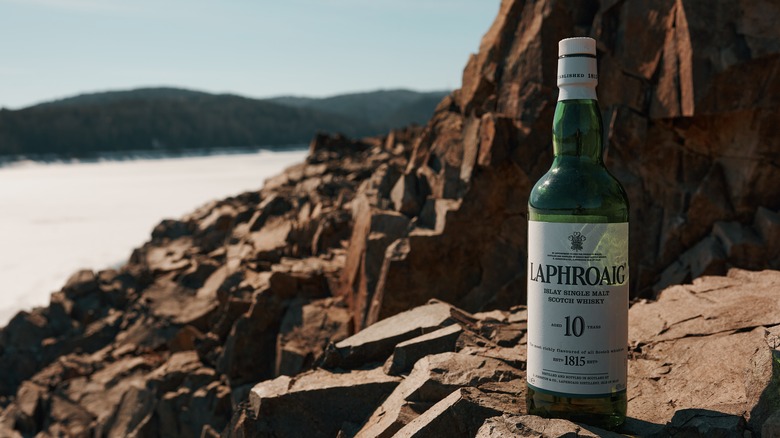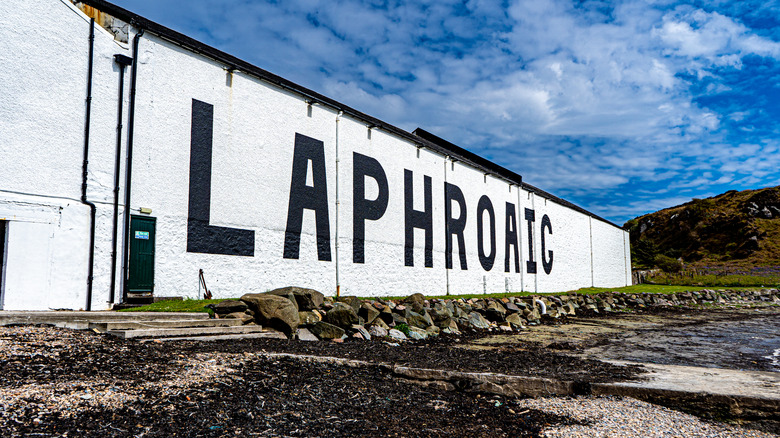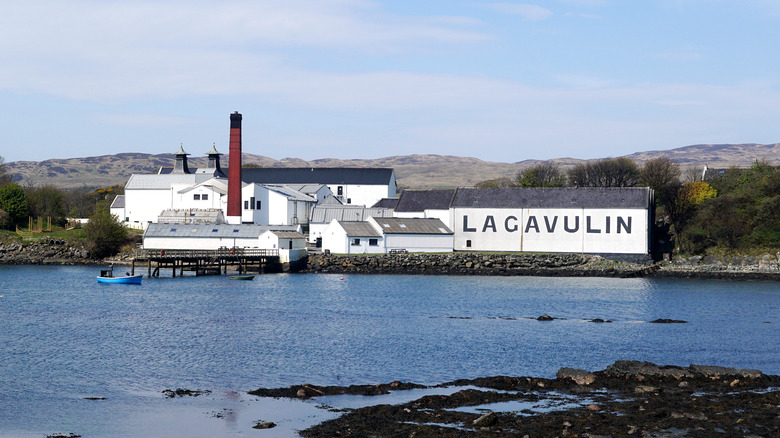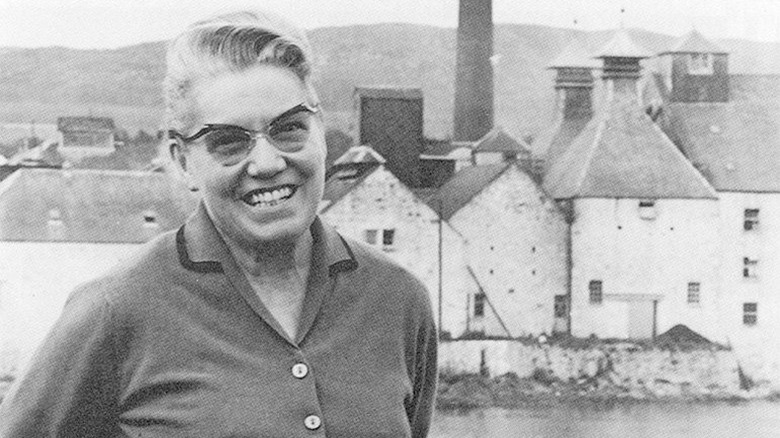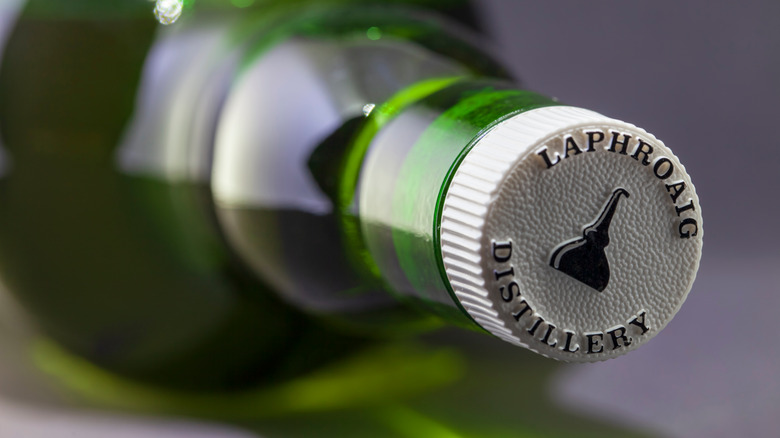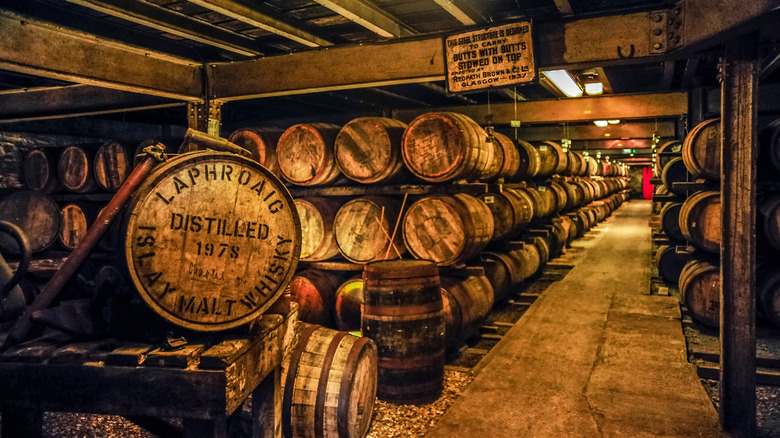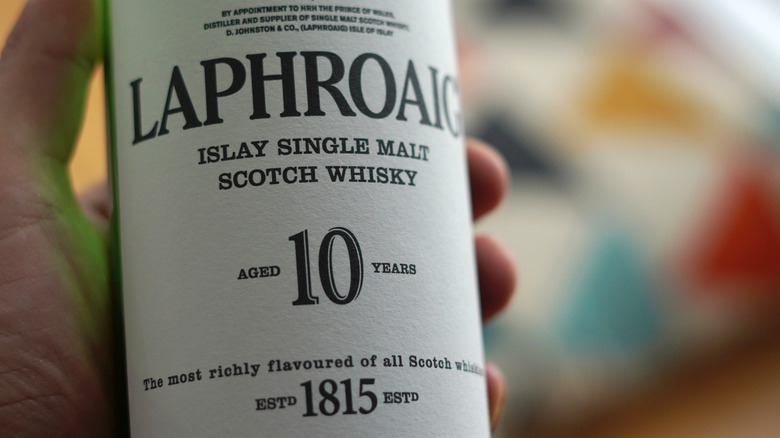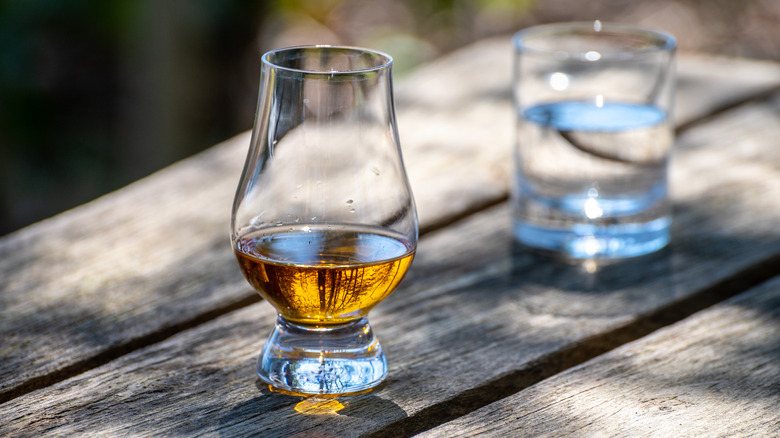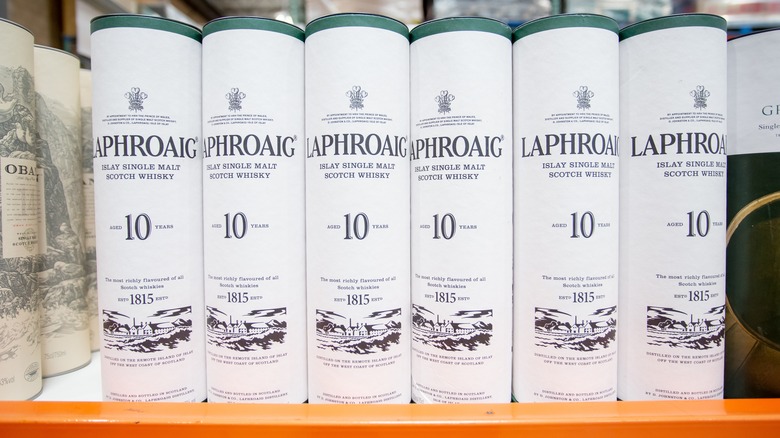Laphroaig 10 Year Single Malt Islay Scotch Whisky: The Ultimate Bottle Guide
The world of Scotch whisky is rich in history, variety, and dedication to craftsmanship. Among the several styles of Scotch whisky available, few are as unique, bold, or sought after as those from Islay. This scotch category is restricted to whiskies made on the Isle of Islay, an island that's part of the Southern Hebrides on the western coast of Scotland. Islay whiskies are characterized by their peat, smokiness, and strength, distinctly remarkable traits within the realm of scotch.
As of 2022, there are only nine working distilleries on Islay, per Elements of Islay. Laphroaig is one of the most storied, regarded, and high-quality Islay scotches that has been sustained for two centuries. Laphroaig is not only among the oldest scotch distilleries still in operation, but it has also remained a powerhouse of the whiskey world through a commitment to traditional methods to achieve a consistent standard.
In addition to making excellent whisky, Laphroaig is dedicated to its customers, forging long-lasting relationships through the distillery's "Friends of Laphroaig" program. Members are given a chance to "claim their own plot" of land on Laphroaig property. They also receive an annual special edition bottle of Laphroaig Scotch as part of their Càirdeas expression, a name that translates to "friendship" in Gaelic.
Laphroaig 10 Year is the most fundamental and popular expression. The flagship bottle of this historic distillery, it is also a staple Islay Scotch whisky. Here is everything you need to know about this titan of its industry.
History of Laphroaig
When Laphroaig was founded in the early 19th century, it was done so through a lease of land from the laird of Islay. Around 1810, brothers Donald and Alexander Johnston leased 1,000 acres on the isle to raise cattle. This portion of land is known today as Laphroaig, which means "broad hollow by the bay."
Whisky may not have been the initial venture the Johnston brothers took on, but it came about as a byproduct of tending to their livestock. In order to raise cattle, you have to keep them well-fed. In Scotland, that means growing copious amounts of barley to satisfy their hunger throughout the long Scottish winter months. Elsewhere, in Britain, the surplus of barley that comes with raising cattle translates to brewing beer, but not for these two Scots.
The Laphroaig distillery was officially founded in 1815. By that time, word had spread that the Johnston's whiskey was very tasty and different from others. This was because of the water source on Laphroaig; the water lacked any harsh minerals and was very soft, which is ideal for distilling alcohol. Realizing the potential profit of selling their stuff, the Johnstons decided to abandon their original business undertaking, focus on the whiskey, and a legend was born. From there, the lore of Laphroaig grew and grew, which led to disputes with neighboring distilleries, one of which has sustained up until this very day.
Laphroaig and Lagavulin are bitter rivals
One year after Laphroaig was founded, another distillery, Lagavulin, was established just one mile away (via On The Sauce Again). The two operated simultaneously for decades. For reasons unknown, an agreement was then made between them, allowing Lagavulin to use Laphroaig's whisky to blend with their single grain. This disrupted Laphroaig from reaching a larger market. In 1907, Laphroaig took Lagavulin to court and was able to have the agreement dissolved. The rivalry was only just beginning, however.
During the court dispute, Lagavulin's owner, Peter Mackie, blocked Laphroaig's water supply in order to tamper with production. Luckily, with the settling of the first court contention, the blockade ceased, but the resentful competition continued. In 1908, Mackie tried replicating Laproaig's whisky by building identical stills in the Lagavulin distillery. While Mackie's "Malt Mill" was unable to accomplish this, it damaged Laphroaig's production for a time. It did not recover until 1921 with the takeover by Ian Hunter, a Johnston family descendent. It was then that Laphroaig was not only able to increase production, but it grew rapidly throughout Scotland, and into the international acclaim it is given today.
Conflict over Laphroaig's water supply is not exclusive to Lagavulin. In 1836, a new distillery was built on the same plot of land as Laphroaig, and Laphroaig was forced to share its water supply (via Islay dot Scot). Johnston challenged this, and the dispute lasted over six years and was resolved when the new distillers relocated.
Laphroaig hired the first woman distillery manager
Elizabeth "Bessie" Williamson was born in Glasgow, Scotland, in 1910. She grew up in a time when women working in the whisky industry were restricted to job opportunities such as office clerks or cleaning (via Scotch Whisky).
While studying at the University of Glasgow to become a teacher, Bessie visited Islay with her best friend on holiday in the summer of 1934. There, she heard of a typist job opening at the Laphroaig distillery, applied, was offered the position, and never returned to Glasgow. This was shortly after Ian Hunter took over the distillery, and he eventually put Bessie in charge of the office. After Hunter's stroke in 1938, he relinquished many of his duties as distillery manager, passing most of them on to Bessie.
Following World War II, Laphroaig was able to restart production, and Hunter put Bessie in charge of it all, making her the first woman to become a distillery manager in Scottish history. During her time at the helm, demand grew so large that Laphroaig could not keep up with its popularity. Bessie became so well regarded in Islay and the scotch industry for both her professional and charity work that she was awarded the Order of St. John by Queen Elizabeth II in 1963 and is still considered the "first lady of scotch." Toward the end of her career, Bessie helped transform Laphroaig into a modern distillery and brand and deserves credit for its global success today.
It's the favorite whiskey of King Charles III
The relationship between the royal family and whisky is old and continuous. King George IV required a hefty helping of Glenlivet during his state visit to Edinburgh in 1822 (via Scotch Whisky). In 1837, the Glenury distillery was named "Distiller to Her Majesty" by Queen Victoria. More recently, in 2011, Macallan released a special "Coronation Collection" to commemorate Queen Elizabeth II's Diamond Jubilee and the wedding of Prince William and Kate Middleton. There is, apparently, no royal fondness of scotch quite like King Charles III's love of Laphroaig.
It is well known that King Charles loves quality scotch, but it appears that his favorite, above all else, is Laphroaig. He issued the distillery a Royal Warrant of Appointment in 1994, the first distillery to be recognized by the then Prince of Wales. Laphroaig responded by releasing a special edition 10-year-old scotch named "Royal Warrant." The visit was originally only supposed to last less than an hour, but Charles mildly crashed his plane while landing on the Islay runway, per Laphroaig Collector. Although no one was harmed, the plane itself was severely damaged. What was supposed to be a quick stop-by at Laphroaig turned into an hours-long visit.
Charles III has visited Laphroaig multiple times since, once in 2008 to celebrate his 60th birthday as well as in 2015 to celebrate the distillery's 200th anniversary of operation. His favorite expression was Laphroaig's 15-Year, which was discontinued in 2009, much to his dismay.
How is Laphroaig made?
Approximately nine people have run the Laphroaig distillery since 1815, and each was committed to making whisky the same way it always has been. The process of making Laphroaig 10-Year starts with its coveted, one-of-a-kind water. The Kilbride Stream from which the distillery gets its water supply is soft, peated, non-mineralized water and is ideal for whisky making in terms of flavor and temperature.
Not only does Laphroaig have its very own water, but it also has its own peat beds, which are traditionally cut, dried for three months, and then burned. The peat on Islay is unlike the peat on mainland Scotland because of the absence of forestry. Therefore, the peat bogs on Laphroaig's property provide a more medicinal, earthy taste, another aspect of what makes this scotch so unique. Laphroaig's very own barley is steeped from its water source and then transported to the malting floors, where it germinates before being smoked by the burned peat in the kilns below. The smoke imbues the barley for 17 hours, then dried and made ready for mashing.
From there, the process is typical. The mash ferments for about 55 hours and is then distilled twice inside Laphroaig's copper stills; the result is a 60% alcohol distillate. This solution is diluted with more water and poured into ex-bourbon barrels shipped to Islay, sourced primarily from the Maker's Mark distillery in Loretto, Kentucky. Ten years of aging later, Laphroaig's iconic whisky is ready to bottle.
What does Laphroaig 10-Year taste like?
All of the extraordinary resources utilized by Laphroaig to make its flagship whisky are prevalent with each smell and sip. When most people think of peated scotch, they assume it will taste harsh and overbearing to a scotch novice. Although Laphroaig is no timid whisky, it remains approachable for newcomers to the spirit as much as it satisfies a craving from a connoisseur.
The aroma of Laphroaig 10-Year is a solid but not overwhelming peat. Its smoke, wood, and salinity are supporting actors, as is a faint, soothing presence of citrus and honey notes to keep everything bright and enticing. On the palate, this whisky has just as much depth as its aroma. The peat is pungent but is tamed by the honey, vanilla, and oaky flavor notes imparted by the bourbon barrel maturation. The peat and smoke work in tandem as a driving force throughout each sip, supported by these barrel notes toward a sharp and vivid finish.
It should be understood that a peated scotch like Laphroaig that is only aged for 10 years will not be lacking in any alcoholic burn. The burn from Laphroaig 10 will not scare you away, but it is there. The other characteristics of this whisky do make up for it, however, sort of complementing the alcohol. The rich peat and smoke and boldness of Laphroaig 10-Year almost shouldn't be silky smooth. Instead, the balance between strength and complexity is a thing to behold.
The best way to drink Laphroaig 10-Year
The best way to enjoy Laphroaig 10-Year, or any sipping spirit for that matter, is in glassware that allows room for both your nose and mouth. These include a regular lowball (or rocks glass) or, more traditionally, a Glencairn glass, which is explicitly made for whiskey.
These glasses are tulip-shaped, meaning they have a wide base that narrows toward the rim. This shape allows the whiskey to breathe and for your nose to take in all of its aromas in order to inform your taste. Glencairn glasses have a very short, wide, sturdy stem that allows you to hold your glass of whiskey without warming it up with your body temperature. These glasses will give you an ideal whiskey-tasting experience that lets you take in all the aromatics and flavors Laphoraig 10-Year has to offer. If straight whiskey is too strong for your liking, a small splash of water makes things more approachable.
Another great way to enjoy Laphroaig is in a delicious cocktail. Simple whiskey cocktails like an Old-Fashioned can be just as easily made with Laphroaig instead of bourbon, providing a smoky take on the classic drink. Even modern scotch classics like the Penicillin utilize a floating of Islay scotch, and there's none more accessible than Laphroaig.
No matter how you choose to enjoy your bottle of Laphroaig 10-Year, it is always encouraged that you do so the way you enjoy most, with beloved company and always responsibly.
Is it expensive?
For a whiskey as historic, unique, and famous as Laphroaig 10-Year, it remains quite an affordable bottle. According to Wine-Searcher, the average cost for one is $62, which may seem like a lot, but this price should be viewed in the context of comparable bottles. Plus, Scotch whisky, in general, is more expensive in the U.S. than it is in the United Kingdom, no matter which bottle you buy.
Unlike bourbon, which is primarily made with relatively cheap corn, scotch is made with barley. It is a far more expensive ingredient to produce, per Whisky Ride. Furthermore, single malt scotches, like Laphroaig, are made in a pot still, which is more costly to operate than the more common column stills. This is because the column still can run continuously, whereas pot stills can only run once per batch and must be stopped, emptied, and recharged for the next one. Finally, Whisky Ride notes that the main reason scotch is a more expensive spirit for U.S. customers is due to taxes. Because Laphroaig is made in Scotland, its distribution to America comes with a hefty import tax, which is made up for by sellers.
Laphroaig 10-Year may seem like a substantial investment, but it is actually one of the more affordable Islay scotches on the market, especially when compared to the price of its competitors. If you do decide to go for a bottle, you can rest assured you will be purchasing a scotch like no other.
Laphroaig 10-Year vs Lagavulin 8-Year
It only makes sense to compare and contrast Laphroaig 10-Year to a whisky from the distillery it has rivaled for 200 years. It is also only fair to compare a 10-year-old scotch to one of a similar age. Lagavulin is most known for its 16-Year scotch, which is an excellent whisky aged to a certain smoothness that simply isn't attainable with only a decade of maturation.
As stated earlier, Lagavulin was founded in 1816 and established by John Johnston, unrelated to the Laphroaig Johnstons. In 1817, another distillery opened nearby, founded by Archibald Campbell, and the two functioned under the same trader. When Peter Mackie showed up in 1887, he unified both distilleries under the name "Lagavulin," and it has been that way since.
Lagavulin's 8-Year expression was released in 2016 to commemorate the distillery's 200th anniversary. This whisky is definitely different from what has made Lagavulin such a popular brand, as its lesser age makes it absent of richness or complexity. However, this whisky is still a more than respectable expression that gives you everything you'd expect from a young Islay scotch. As it compares to Laphroaig 10-Year, however, Laphroaig comes out on top. It is understood Laphroaig has two extra years on Lagavulin 8-Year, but, as a whole, Laphroaig's nuance and individualism simply make it better. Laphroaig's peat is superior, along with its collection of aromas and flavor notes. Plus, it's cheaper, with Lagavulin 8-Year costing $68 on average (via Wine-Searcher).
